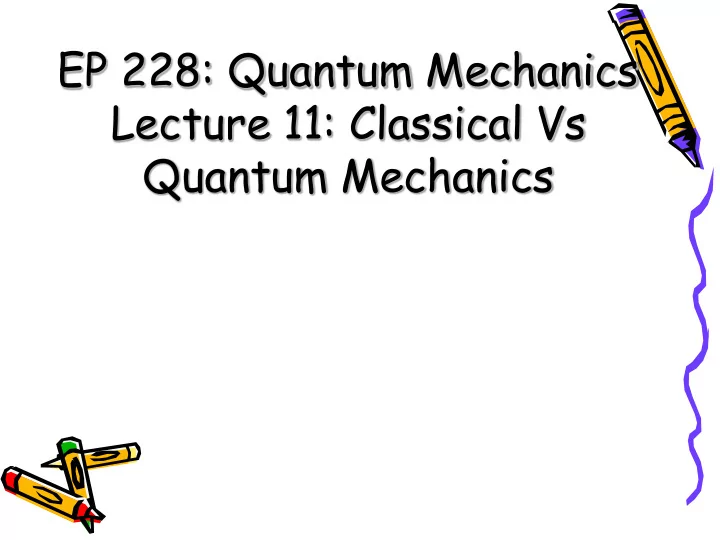

EP 228: Quantum Mechanics Lecture 11: Classical Vs Quantum Mechanics
Probabilistic interpretation • For large number of identically prepared system, we can say the probability of measuring enery E n will be |C n | 2 . Recall the definition • Hence the expectation value of energy will be
Classical Mechanics • Dynamical variables A, B in the phase space ( position x and momentum p of the particles in the system) • Hamiltonian H(x,p) helps in finding the time evolution of x and p Poisson bracket Hamiltons eqns
Quantum classical analogy • Dynamical variables becomes operators acting on Hilbert space • Poisson brackets becomes commutator brackets • We can prove for any two operators • Hence non-zero commutator of two operators will imply uncertainty principle
Commutator properties • Commutator bracket under conjugation gives a negative sign. To make the commutator hermitean, we introduce i. • For [x,p] commutator , Planck’s constant h is introduced to make it dimensionless • [AB,CD]=A[B,CD] + [A, CD]B= AC[B,D]+A[B,C]D+[A,C]DB+C[A,D]B
Time evolution of state vectors • Postulate : state vector evolves in time governed by the time dependent Schrodinger equation • For time independent Hamiltonian, we can integrate the equation to give
Nature of the time evolution operator • Time evolution operator • Takes state vector from t o to t • Note that the norm is t independent • Such operators are called unitary opr
Free Particle • Let us work in position basis • Since the Hamiltonian is dependent on p, we can work in momentum basis
Free particle continued • The momentum basis
Position dependent V(x) • If we operate Hamiltonian on position basis • We will show it will be differential operator at x o
Momentum operator • Expand commutator in • Simplifies to • Recall derivative of delta function
Momentum operator contd • Hence we can write
Position opr acting on p basis? • Do a similar exercise and show that • With this data, • Show that the above equation is time dependent Schrodinger equation
Recommend
More recommend